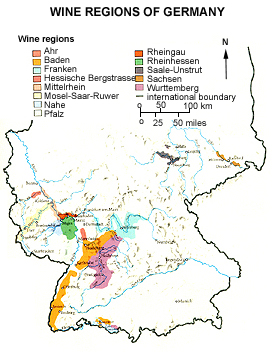 |

Of all the grape varieties used in Germany, it is Riesling, with its marked balance of fruit and acidity, that makes wines which have the greatest capacity to age. In general, the sweeter the wine, the longer it will improve in the bottle, with wines at the top of the sweetness scale, Beerenauslese and above, reaching a peak after seven to ten years. Acidity is essential if the wine is to age well: very warm years sometimes make wine which has low acidity but considerable sweetness: these wines last less well than more balanced ones. |
|
|


